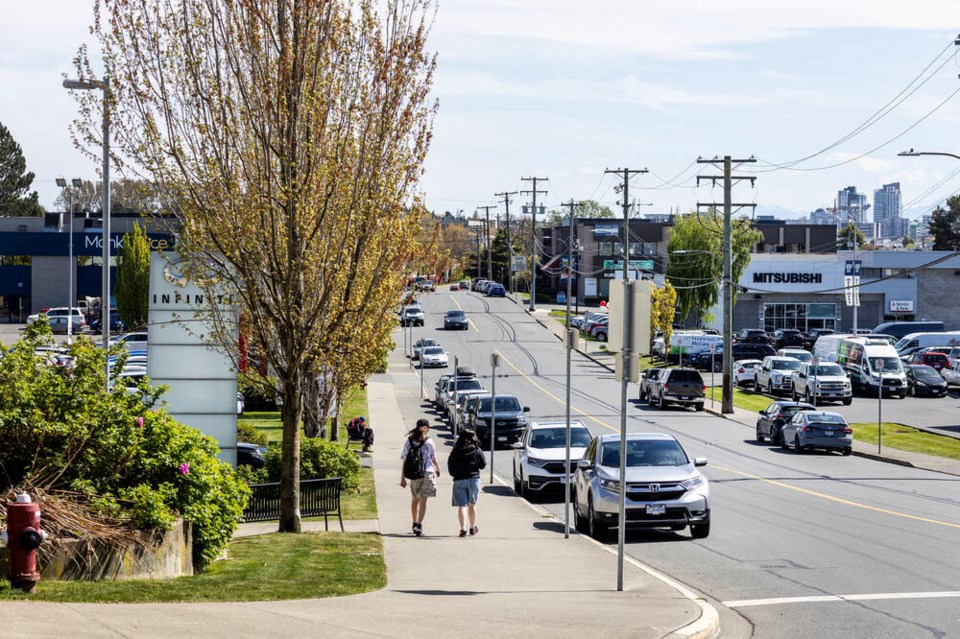Saanich council have moved a step closer to establishing a city centre in the Uptown-Douglas area.
Councillors on Monday endorsed terms of reference for staff to work on a pre-zoning and network design project for the area.
The unanimous vote gives district staff licence to determine how best to pre-zone a section of the district — bordered by Saanich Road to the north, Tolmie Avenue to the south, Blanshard Street to the east and Tennyson Avenue and Harriet Road to the west — in order to shape the kind of development the district wants there.
In seven months, staff will come back to council with recommended bylaw changes designed to reshape the future of the area to match the vision of the Uptown-Douglas plan.
The comprehensive land-use plan, adopted in 2022, is designed to transform, over the next 20 to 30 years, the area into mixed-use, walkable neighbourhoods that will serve as the heart of Saanich.
The area is currently dominated by asphalt, car dealerships, businesses and light industrial use.
The hope is that new zoning designations will allow the district to encourage the redevelopment of existing properties into mixed-use projects with dense residential components.
Zoning would also help to conserve existing light-industrial uses by establishing zones for “mixed employment” that blend industrial, commercial and residential uses.
In the plan, Oak Street is re-imagined as a high street with inviting businesses lining the road, residential development rising above them, bike lanes and a pedestrian promenade.
At the same time Audley Street, currently blocked off to the east of Douglas Street, will be extended to act as a laneway between Douglas and Oak streets.
Coun. Colin Plant said a slow, conservative and deliberate approach is likely the right path in this case.
Pre-zoning, which lays out the kind of development a municipality wants to see in a certain section of property, is a first for Saanich.
“We’ve seen other communities like Kelowna have success with pre-zoning where they want to entice redevelopment along a major corridor,” said Mayor Dean Murdock. “This is one corridor where it makes a lot of sense for us to move in this direction, and we will see what kind of response we get by setting that land use at either end of this corridor.”
Murdock said the goal is to make it “as easy and predictable as possible” for landowners to come forward with development applications that align with the Uptown-Douglas plan.
“We’re hopeful that by setting that land use, it will invite applicants to come forward with applications that will help us realize that vision,” he said.
Murdock said it’s about establishing Saanich’s city centre at a logical point — the transportation corridors from Victoria’s downtown, the West Shore and Saanich Peninsula all meet in the area — and dictating the right mix.
It was stressed that no landowner is being forced to change anything, and that Saanich is intent only on providing incentive to change.
District staff noted that when zoning changes do come into force, something that could happen by the end of this year, existing zoning permissions will stay in place and be grandfathered in.
The only way that would change is if a site is unused for six months or a landowner intends to expand or change their operation.
Questions had been asked about the effect of pre-zoning on assessed value and property taxes.
According to B.C. Assessment, zoning changes do not necessarily mean there will be a change in assessed value, though properties are generally assessed at their highest and best use.
“Zoning changes don’t always change the highest and best use right away, and the market response is ultimately what drives the assessed values,” said assessor Brian Murao.
“While zoning is important because it’s a major factor in the legally permissible principle of highest and best use, there are three other principles which are also critical: physically possible, financially feasible, and maximally productive.”



